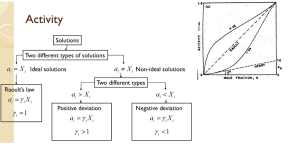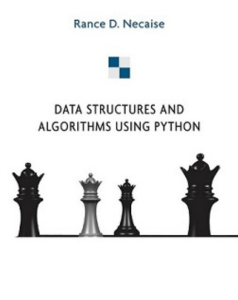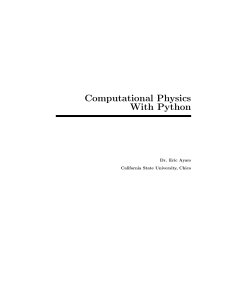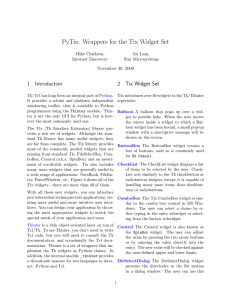Is the Norlhern African Python (Python sebae) Established in
Anuncio
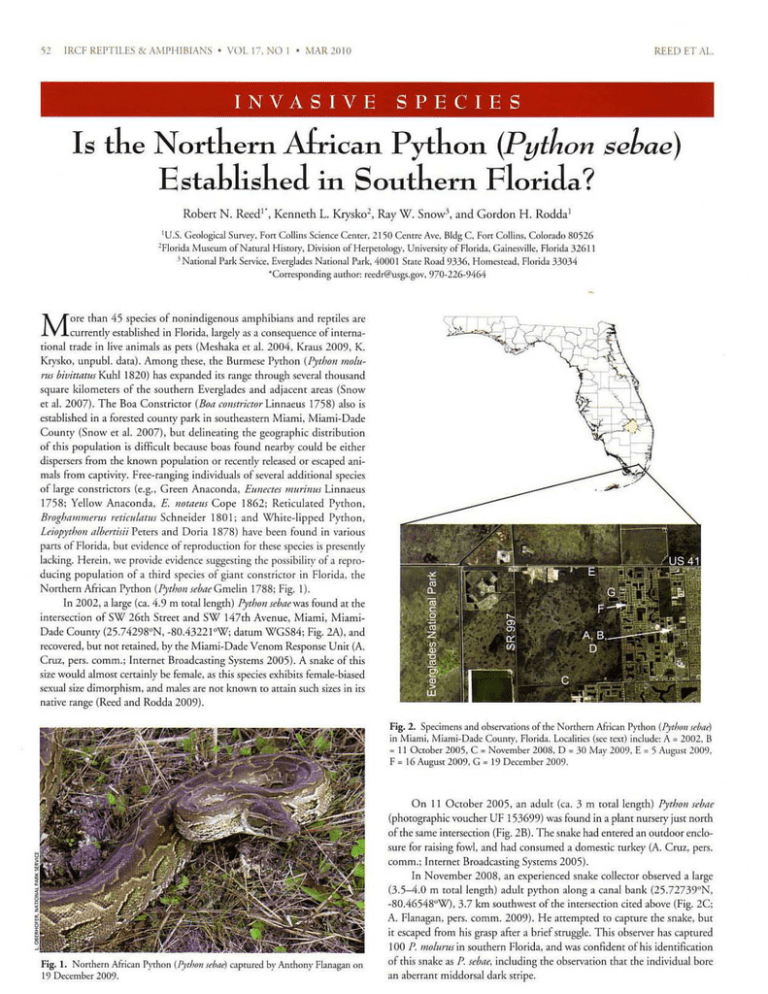
52
IRGREl'TlLES& ..l,,\lPlIlBIANS·
VOL 1"", NO 1 • i\lAR2010
INVASIVE
REED ET AL.
SPECIES
Is the N orlhern African Python (Python sebae)
Established in Southern Florida?
Robert N. Reed l ', Kenneth L. Krysko!, Ray W. Snow-I, and Gordon H. Rodda l
[u.s, Geological SUr\·er. Fon Collins Science Ce,uer. 2150 Cenlre Ave. Bldg C. Fon Collins. Color:ldo 80526
'Florida Mu>eum of Natural History. Division ofHerpetologr. Unive,.,i!}· of Florid,. Gainesville. Florida 32611
j NaliollaJ Park Service. E"ergbdes Nalional Park. 40001 Slate Ro~<l9336. Homestead. Florida 33034
'Corresponding amhof": reedr€'usgs.gov, 970·226·9464
ore than 45 species of nonindigenous amphibians and reptiles arc
currently established in Florida, largely as a consequence of imernational trade in live animals as pets (Meshaka et aJ. 2004, Kraus 2009. K.
Krysko, unpubl. data). Among rhese, the Burmese Pyrhon (Pytholl 1110/"nt, bivinllflls Kuhl 1820) has expanded irs range through several (housand
square kilometers of the southern Everglades and adjacetH areas (Snow
et al. 2007). The Boa Cons(ric(Or (Boa cOIwriaor Linnaeus 1758) also is
eSlablished in a forested count)' park in southeastern Miami. Miami-Dade
Count)' (Snow e( al. 2007). but delineating the geographic distribution
of lhis population is difficult beC;J.use boas found nearby could be either
dispersers from the known popula(ion or recently released or escaped animals from c.1ptiviry. Free-ranging individuals of several additional species
of large constrictors (e.g.. Green Anaconda, Ellllertes IIIlIrim" Linnaeus
1758; Yellow Anaconda, E. IIOlaellS Cope 1862; Reticulated Pphon.
Bmgbammrms rnirulaflli Schneider 1801: and Whi(e-lipped Pyrhon.
Lriopyt!Jrm ,tlbert;,ii Peters and Doria 1878) have been found in \'arious
partS of Florida, but evidence of reproduction for (hese species is preselllly
lacking. Herein. we provide evidence suggesting rhe pmsibilit)' of a repro·
ducing population of a [hird species of gialll conSlficlOr in Florida. the
Northern African Python (PJ"boll iebarGmelin 1788; Fig. I).
In 2002, a large (ca. 4.9 m (Ora] length) Pytholl srbarwas found at thl."
intersecrion of SW 26th Street and SW 147th Avenue, Miami, MiamiDade Counry (25.74298°N, -80.43221 oW; damm WGS84; Fig. 2A), and
recovered, but not retained, by the Miami-Dade Venom Response Unit (A.
Cruz. pers. comm.; Internet Broadcasting Sysrems 2005). A snake of this
size would almosr certainly be female,:1.\ this species exhibits female-biased
sexual size dimorphism. and males are not known (0 anain such sizes in its
native range (Reed and Rodda 2009).
M
Fig. 2. Specimens a"d obsc:rwlions of lhe Northern African P}"tho" (I'p!)()" "bile)
ill Miami. Miallli·D~dc Coumy. Florid" Loc.1Jitics (see lext) include: A x 2001. B
- 11 October 2005. C. November 2008. D • 30 /l.hy 2009. E. 5 August 2009.
F. 16 August 2009. G • 19 December 2009.
Fig. 1. NOrThern Africl.!1 PydlOn (l'yr!Jlm srb"r) captured by Anrhonr Flanagan 0"
19 December 2009.
On 11 October 2005, an adult (ca. 3 m total length) Pyrhon srb{/r
(photographic voucher UF 153699) was found in a plant nursery just nonh
of the same intersection (Fig, 2B). The snake had entered an outdoor enclosure for raising fowl, and had consumed a domestic nlrkey (A. Cruz, pers.
comm.; lnterner Broadca.lting Systems 2005).
In November 2008, an experienced snake collector observed a large
0.5--4.0 m toullength) adult python along a canal bank (25.72739~N,
·80.46548"W). 3.7 km southwest of rhe intcrsenion cited above (Fig. 2C;
A. Flanagan, pers. comm. 2009). He attempted to capture the snake, but
it escaped from his grasp afrer a brief srruggle. This observer h:IS captured
100 1', IIIO/lintS in southern Florida, and was confident of his identification
of this snake as P. srbar, including the observation thar [he individual bore
an aberrant middorsal dark stripe.
J"\',\\IVE SPECIES
meF REPTILES & A;\lI'HlBIANS • VOL \-. NO \ • 1\1J\R 2010
53
On 30 May 2009. an approximately 2.75 m-Iong Pytholl "bile was
struck by a motor vehicle at the same intersection cited above (Fig. 20),
and recovered by the Miami-Dade Venom Response Unit (A. Cruz, pers.
comm.). This snake subsequently died from its injuries, and dissecrion
revealed that it was an adult female with 37 "undeveloped ova" (unknown
whether these were ovarian follicles or oviductal eggs, as thl.-J' were discarded
prior to preservation). This specimen, along with photographic images, was
rransferred to the Florida Mllseum of NalUral History (UI' 155725) for
preservarion and documentation.
On 5 August 2009, a neonate (59 cm SVL) Pytholl Jeb"e(UF 155500)
was found dead on US 41,0.09 km WeST of 160th Avenue (25.76089°N.
-80A5596°W; Fig. 2E). which is 3.0 km northwest of the intersecrion
cited above. On 16 August 2009, another juvenile P. sebae (110 g. UF
155726) was collected at 15527 SW 18th Street, Miami (25.74984°N.
-80.44637°W; Fig. 2F), and recovered by the Miami-Dade Venom
Response Unit (L Woods, pers. eomm.). Dissection revealed a 72-g Boattailed Grackle (QlIisca{IIS major) in the stomach of the python. Sec Table
1 ior bod)' lengths and disposition of specimens.
,\lost recently, on 19 December 2009, an adult male P. >t'bae (UF
15-19.3.249 cm SVL, 281 cm total length, 10.374 kg) was collected from
a Mr/{z1eurnslash pile (Fig. 3) just west of 157th Avenue south of US 41
(~5.-:-5245·N, -80,45079W; Spei:imen not yet accessioned into FLMNH).
The snake was basking on top of dead logs and appeated reproductively
compctent; its tCStes were swollen and mildly turgid, sperm duers were con"ollned, and microscopic examination of fluid expressed irom the duers
ren'aled multiple spermatozoa.
The above specimens and observations are presently confined to a
small (- \0 km!) area of Miami, JUSt 1.6 km east of Everglades National
Park (Fig. 2). All seven pythons were found southeast of the intersection
oiUS 41 and SR 997, an area often referred to as Bird Drive Basin. Taken
as a whole, rhese seven observations over a seven-year period, including
muhiple adults, a gravid femak and young-of-year hatchlings suggest the
possibility oi a reproducing population of Pytholl >fbI/e. Recovery of adults
over several years followed by receml)' hatched juveniles argues against the
notion that all oi these individuals were the result ofa single release of multiple individuals. leaving mllitiple releases or a reproducing population as
the mosl likely explanations. These observations do nOt represent definitive
evidence of a reproducing population, and some would argue that only the
di5CO\-e~' ofa female brooding eggs would qualify as definitive evidence. By
the time such discoveries are typically made, of COUTse, a species is often well
establish~-d_ Indeed, the observations of l';-rIJOII Jfbaf in Miami highlight the
diRiculty of declaring when a population of extremely cryptic reptiles has
b«:ome established.
ThrC'C of the fi"e adult pythons were from a small area just south of
TrC'C Island Park. which iS50uth oiUS 41 and bounded on the east and west
b~' S\'(· 146th Street and SW 149th Street, respectively. The two harchlings
were found farther to the west and north, and could conceivably represent
dispersing individuals. Habitats in this area include high.density single-family housing de·..dopmems. undC\'eloped but highly disturbed habitats with a
I
I
,•
~,
Fig. 3. Scott Goetz (U.S Geological SmYer) precariously makes his way through
a large pile of dead Md,del/mlogs while searching for p}'thom in Bird Dri\'e Basin.
The prrhon l'icuJred in Fig. 1 hod been cal'",re<1 from ,his pile.
preponderance of invasive Melli/mea trees, small man-made canals and lakes,
agricultural areas (primarily to rhe southwest), and seasonally Aooded wetlands. Lllld ownership in the area is complex. with various parcels oclonging
to homeowners. housing developers, plant nursery and agricull\lral interests. Miami-Dade County. South Florida Water Management District,
Miccosukee Trioc oflndians. Sl:lte of Florida. and others.
The area described above is within or adjaccnt to the eastern edge of the
known distribution of invasive Burmese Pythons (P)'fbon lIIolllnl, bivitt{1fI1S;
Snow et al. 2007). Distinguishing octween P. mO/llnlJand P. Jfbllt'can be challenging, and often hinges on color pattern; although meristic characters (e.g.,
scale counts) arc sufficient to distinguish many individuals, moderate overlap
exislS among these species in many of those characters. Python molunlJ and P.
IflJt/eare known to hybridize in captivity (Branch and Erasmus 1984 and reierences therein), which could nlrther complicate the identification oi a python
recovered from this area. Fertility and fitness of hybrids is unknown, as arc
the potential implications of adding P. Jfbllf genes to me existing population
of P. IIIO/Unil. The potential difficulty oi accurately identifying free-ranging
individuals ofdifferent species ofexotic pythons is exemplified by two P. ,fbaf
recovered from southwestern Florida (east of Sarasota) in 2006 and 2009.
Both of these sp<.'Cimens were originally reported as a different species (one
idenrified as /" lIIo!unlJ and one as a Reticulated Python, Brog!Jl/lIJmenlJ [formerly Pytbon] f((;mUmlJ). As the population oiBurmesc: Pythons conrinue5
to expand within Florida, accurate idenrificnion of large snakes will be crucial
to identifying incipient populations of other species before their populations
become roo widespread for effective eradication programs.
Efforts are currently underway to develop education and outreach
materials that will allow discrimination among these and other giant constrictor species by citizens and resource managers lacking herpetological
Table I. Specimen information for seven P. ublte recovered from the western boundaries of greater Miami, FL from 2002 to 2009. When available. spei:iIllens were accessioned into rhe Florida Museum ofNarural History in Gainesville, FL
Date
Specimen No.
Specimen Type
19 December 2009
16 August 2009
157193
155726
Whole body
2.81 m
OS August 2009
155500
Whole body
Whole body
0.71 m
0.67 m
30 May 2009
2.75 rn
Approx. T oral L..ngth
155725
Whole body
Novembet 2008
NtA
Credible sighting
~3.7 m
11 October 2005
153699
Media account
NtA
Credible sighring
3.05m
4.9 m
2002
)<1
lRCF IlEnll.ES &
,\~'!I'HIBIANS
REED FT AL
• VOL F. NO 1 • M,\R .!010
expertise. Scakeholdcrs from various feder.!!' scale, lribal. and local agencies aJ!iO p13n to partner Wilh non-govern menial cooJXTJtors to conducl
iOlensi\1: SUI'\·cys for Pyd}()/1
in lhe Bird Drive Basin arC'a in 2010 (D.
Giardina. Florida Fish and Wildlife Con~rvalion Commission. pers. camlll,
2009). Such SUI'\'C')'S will aim to deline:tle lhe size and geographic cxlem of
lhe incipienl populalion and altempt er.Jdic-.!tion of remaining individuals.
"1m,.
Acknowledgmenu
We thank A. CrU1., M. Easler. A. Flanagall. C. GillClle, and L Woods for
providing informalion and/or specimens. M. Gr.Jll:lIosJ..-y for assisling "~Ih
specimen preparalion, and C. OOV( for idcmific:uion of avian prey remaim.
K. Hart, W, Meshala. M. Rochford. and an anonymous rcvil:\\1:r provid(-d
helpful commems on e:trlier versio'ls of this manuscript.
Liler.lIure Ciled
Branch, W.R. and H. Era~l1\us. 1984. Captive breeding of pylhons in Somh
A(r;e:t. including delaHs of an imen;peeitic hrbrid (P)'llwIJ ,re!Joe /lI1/(IleIJIi,\'
X Py/IWll moil/illS bil'i/Ul/"I). JOllmal 0/11/(' Herpl!/ologiN" Associll/iOlI 0/
AfriCilI984:1-10.
Inter""t Bro>oc:l5I;ng Systems. 2005. Ra~ IO-fool p)"lhon alt:Kks f.lmlec·s poulrf)"
<h!! 1':1Iwww.clickorlan<lo.comlnew.150879Q8I<1elail.h.m I~ (aeceSled 31
Augu.. 2(09).
Kr.ms. F. 2009. Alim /lqJlilr< ,,,uI AmpIJibimu: A Scim,ijiro,mpmtlium ,,,uI AI/"ty.iJ.
I,wading N"lU~ _ Sprinb",r Series in In"asion Ecology. volume 4. Springer.
New York.
I-'leshaka. W.E., Jr.. B.I'. BUllertidd. and J.B. H.uge. 2004. Exo,i, A"'phibi"llJ "uti
Rrp,ilrs ofF/oritl", Krieger Publishins Co" Melbourne.
Red. R.N, and G.H, Rodd•. 2009. Giant conmiclors: Biologie:tl and managemem protlles and .n eSlJbli,hmem risk USCSlmenl for nine luge .peei.. of
p)~ho"'•• naco"d.., and Ihe Bm Consfrictor. U.S. Geologic.!l SU(\'cy Open
File R"pon 2009·1202. Fon Collinl. Colomo.
Snow. R.W" K.L Krysko, K.M. Eng•. L. Obc:rhof.r. 1\. Warren-Bradler, and
L Wilkin •. 2007. Introduced popula.;ons of B"" romrrinor (Boid.,,) .nd
fy,h,," '""'''nIl bivina"u(l'}~hol1idae) in soud.ern Florid•• Pl'. 416-438. In:
R.W. Henderson and R. I'owell (cds.), Biology ofI/'( BOiU Il"tI I'JlIJOIIs. Eagle
Mountain l'ublilhing Le. E:lgle Mounlain. Uuh.
International Herpetolo~ca1 Symposium
Celebrating our 33rd meetingl
AU -.-iou¥ ~ .
PROFESSIONAL
II< AMATEU~
"IfELCC»"'B !
SPECIAL GUEST
SPEAKeRS
Dr, Harry Greene
!laMy Rubio
Tell Hiclls
Bill Love
JRCF REI'TILES& A,'IPHIBIANS • VOL 17. NO I • /llAR 2010
TABLE OF CONTENTS
CONSERVATION AND NATURAL HISTORY
TABLE
OF
CO;>JTENTS
Special Issue: A Tribute to Henry S. Fitch
PROFILE
Henry S. Fitch ,
,
.
Hfllry S. Fireh liS told to Alia Fireh Echrlle
2
Hllrry W GrUlII'
\'(Iillimn £. Duellmllll
Rohm w,,: Hr1IdnJIJll
Dlluid M. Hillis
Rilymo"d B. Hilty
Mi(/J{l1'1 V. PIlllllmrr
Rid)llrdA. &igd
Gro'll'R. PiSimi
9
REMEMBRANCES
Henry Fitch and the Pra([ice of Nawra[ Hiswry
Reminiscences of Henry S. Fitch
Henry Fitch at Home and in the Tropics
In the Field with Henry Fitch
Nawra! History Observations of Henry Fitch
Memories of Henry Firch
Henry Firch as a Mentor and Teacher
Henry Fitch: The Twilight of an Incredible Career
11
12
13
14
14
15
16
FEATURE ARTICLES AND NOTES
Diet Specialization by me Scarlet Kingsnake, Lompro/Mltis ("'psoidl'S (Colubridac)
.
...........................................................Hllrry S. GrtI'lll', Edmu"dj. Zimml'Tl'T. William M. Palmn-. IIl1d Michael F. Belltlrd
A Survey of Gravid Snakes at Xveral Sites in Southern Wisconsin
joshua M. Kilpfrr
Daytime Amphibian Surveys in Three Protected Areas in the Wesrern Great Lakes
Knllll'th D. BrowlI tlnd Erik A. Bm/l'r
Male Calling Sites in Two Species ofAustralian Toadlers (Anura: Myobarrachidae: Uprrokin) at Two Ponds in
New Somh Wales
Frllncis L umckm, Grorgillll umckm. Campbrll Lrmckm, IIl1d Frallers A. Lrmckm
Hunting T amacore, Url/llOSfodoll mpercilios/ls
Zilm Campos tllld \'(Iilliam MagnllSsoll
Alligator Snapper Stuck in the Mud: Evidence of Aestivation
SUlJt'f/ G. George
Timber Rattlesnake (Crota!1IS h017idw) Swims the Mississippi River
Suvm G. Grorgl'
A Defensive Display by a Smooth Earth Snake (Virg;'lia ua!rritlr)
AndrelU M. Durso and Krvin P. Durso
Sharing the Resource: Six Species of Ranlesnakes in Joshua T rcc: National Park, California
Harold F. Dr Lisk
Observations ofAmplexus and Oviposition in OfJOlis [BlifOl occidl'l1tlllis in the Rio Salado, Pueblo, Mexico
.
...................................................................................................................... GroflTry R. Smith andjulio A. Lnnos-Erpilllli
Discovery of GOllitlTOSdllnlS Geckos (Squamata: Eublepharidac:) in Nonh :cstern Guangdong, China
.
................................................ Zu-SlxlIg Yi. Zhro-OJtlllg lJ, Wl'i*Ullllg Wi'll, Millll HOIl. Wm-Hlltl LII.lllldjllml'S LozdJ
Snakes Using Stumpholes and Windfall T rce-associared Subtc:rranean Structures in Longleaf Pine Forests
.............................
..
18
22
26
35
38
39
40
41
42
46
47
.
Dauid A. Sum. Amanda D. Sum. Sam Pohwimki. xall P. Graham, and urn L Smith
49
Is the Northern African Python (Python sehtll') Established in Southern Florida?
.
............................................................................. Rohm N. Rud, Kl'llIll'th L Kry5ko. Rily W SIIOW, alld Gordoll H IWddn
52
•••
CONSERVATION RESEARCH REPORTS: Summaries ofPublishc:d Conservarion Research Repons...
55
.;.
NATURAL HISTORY RESEARCH REPORTS: Summaries of Published Reports on Natural History.
57
INVASIVE SPECIES
.:.
NEWS BRIEFS
58
.:.
OB1TUARY: John Thorbjarnarson (1957-2010)
60
.:.
EDITORIAL INFORMATION
63
.:.
FOCUS ON CONSERVATION: Rescue Darwin's Frogs
64



